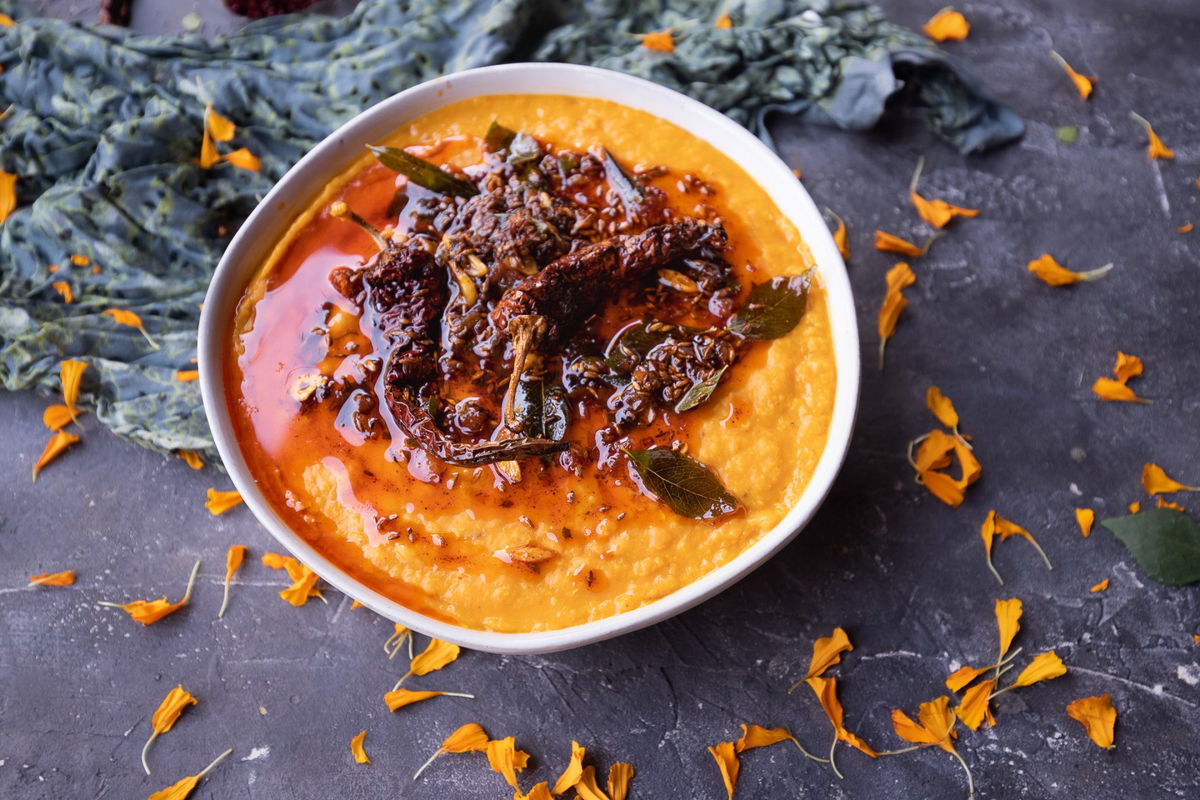Gujarati Dal Dhokli is a warm and comforting Indian lentil soup featuring homemade dumplings. The dish balances tangy, spicy, and sweet flavors, making it a classic Gujarati comfort food. This is my family’s traditional recipe, adapted for the Instant Pot. I’ll share some pointers to simplify the recipe for those who do not have all of the ingredients available.
About this Recipe
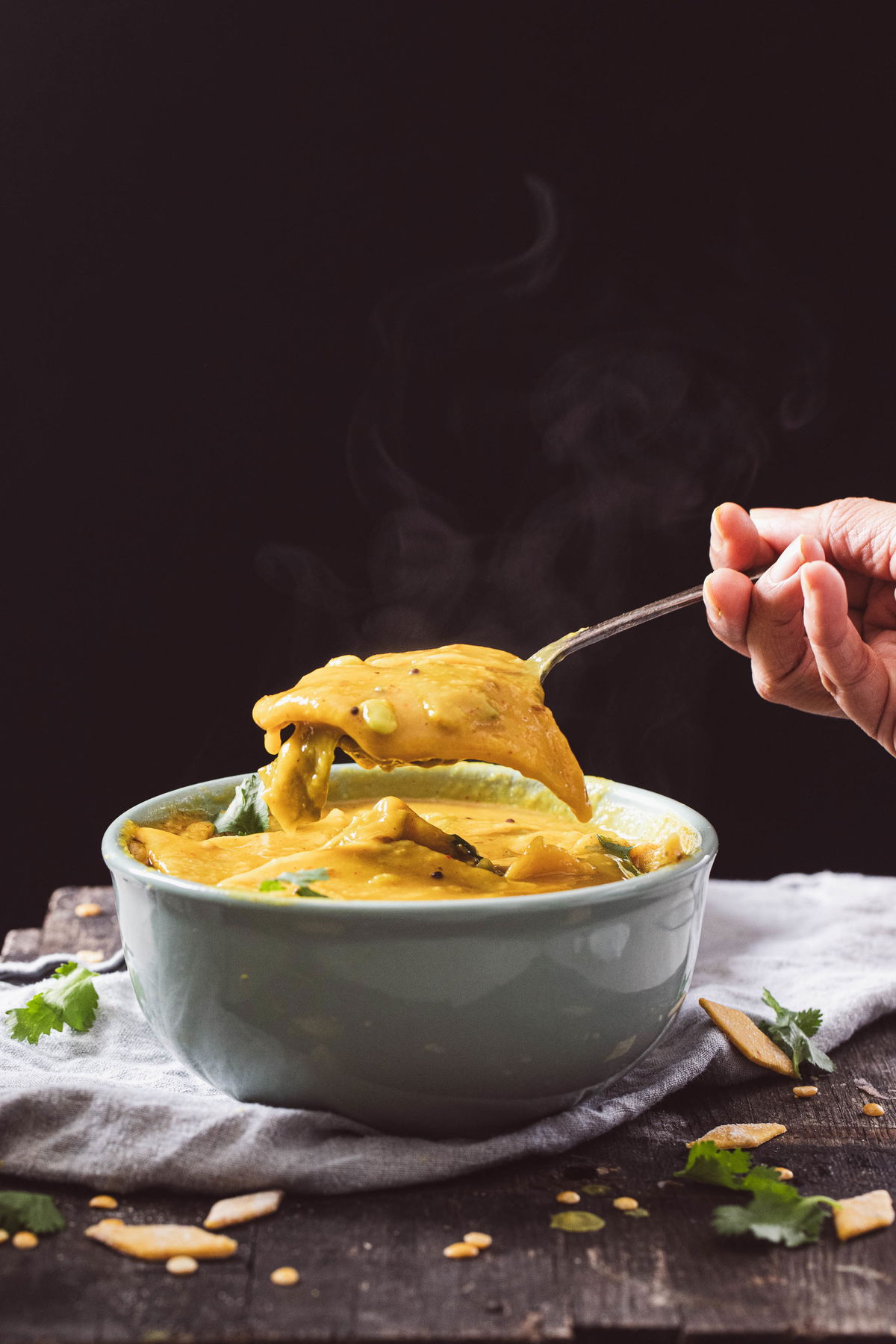
Dal dhokli is a traditional one-pot meal. There are two well-known versions, Gujarati and Rajasthani. This is my family’s Gujarati recipe. One thing to note about my family’s recipe is that we make this with papdi, guvar, or some kind of green. Many Gujaratis are more familiar with using peanuts instead.
Although this recipe describes making dal dhokli from scratch, as my mom describes it, dal dhokli is always a dinner food made from the dal from lunch. In the past, making dal was a much more labor-intensive task, requiring a lot more time standing by a pot to boil it. Without refrigerators, dal could only sit for a few hours before it had to be tossed out. Dishes like this were born out of the need for efficiency and to get the most out of food.
In my lifetime, these conveniences have always been around. Dal dhokli remains an important comfort food, but in my experience is usually made this way, from scratch, rather than as a reuse method.
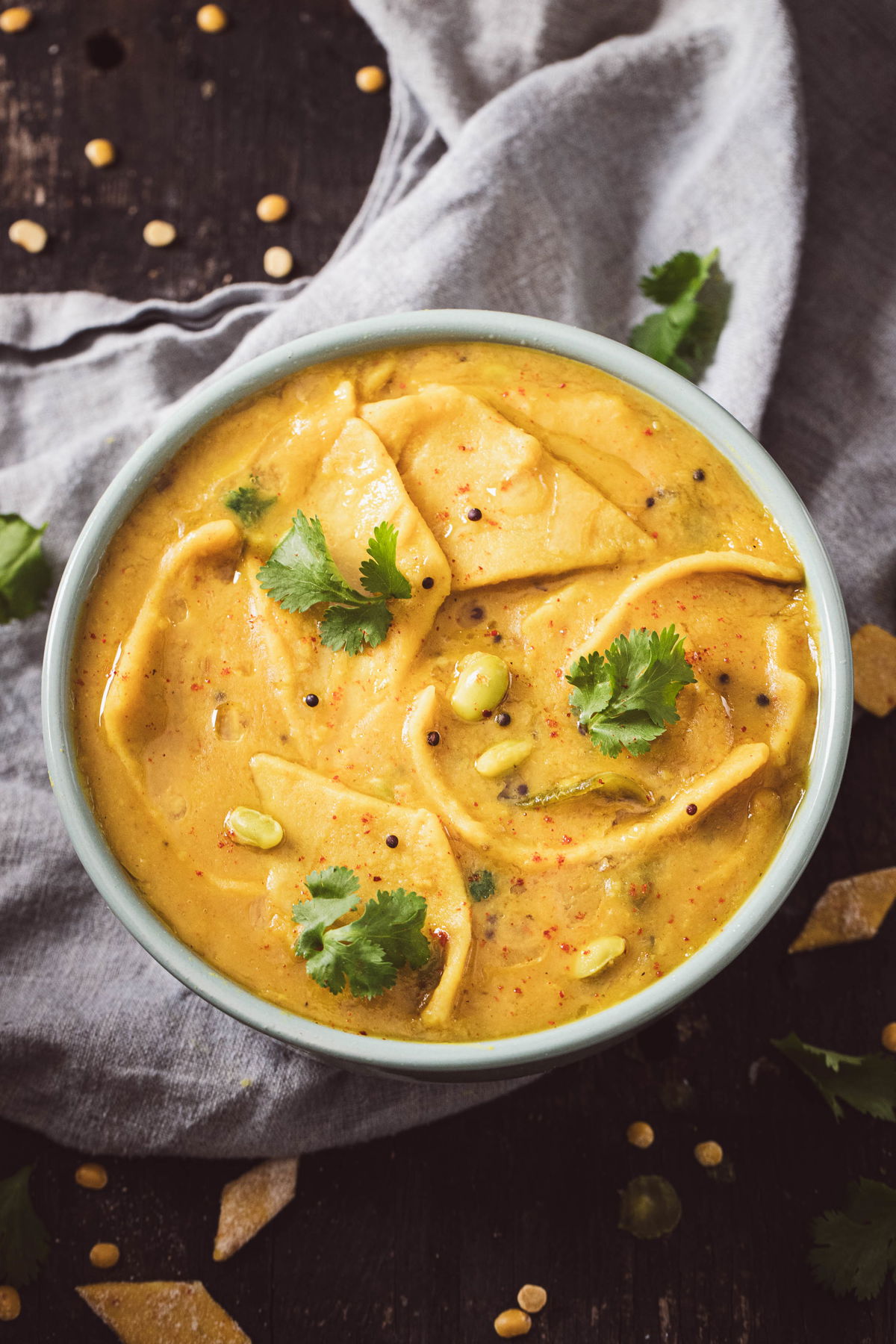
Gujarati v. Rajasthani Dal Dhokli
Dal Dhokli is a much-loved comfort food in Gujarati cuisine as well as Rajasthani. Both versions use tuvar (pigeon peas) for the dal, and atta (finely ground wheat flour) for the dumplings, to create a one-pot meal of dumplings simmered in dal. But there are differences between the two styles of dal dhokli. Gujarati Dal Dhokli has a sweet and sour profile with kokum and jaggery.
The pungency of the Gujarati version comes from mustard seeds, cumin, fenugreek and hing (asafoetida), which is a frequent flavor combination in Gujarati cooking. The Rajasthani version has a thicker dhokli, and a hotter flavor profile, leaning much more on chili powder, garam masala, and coriander powder. The dal used in the Rajasthani version also tends to be thick compared to the Gujarati version.
Ingredients
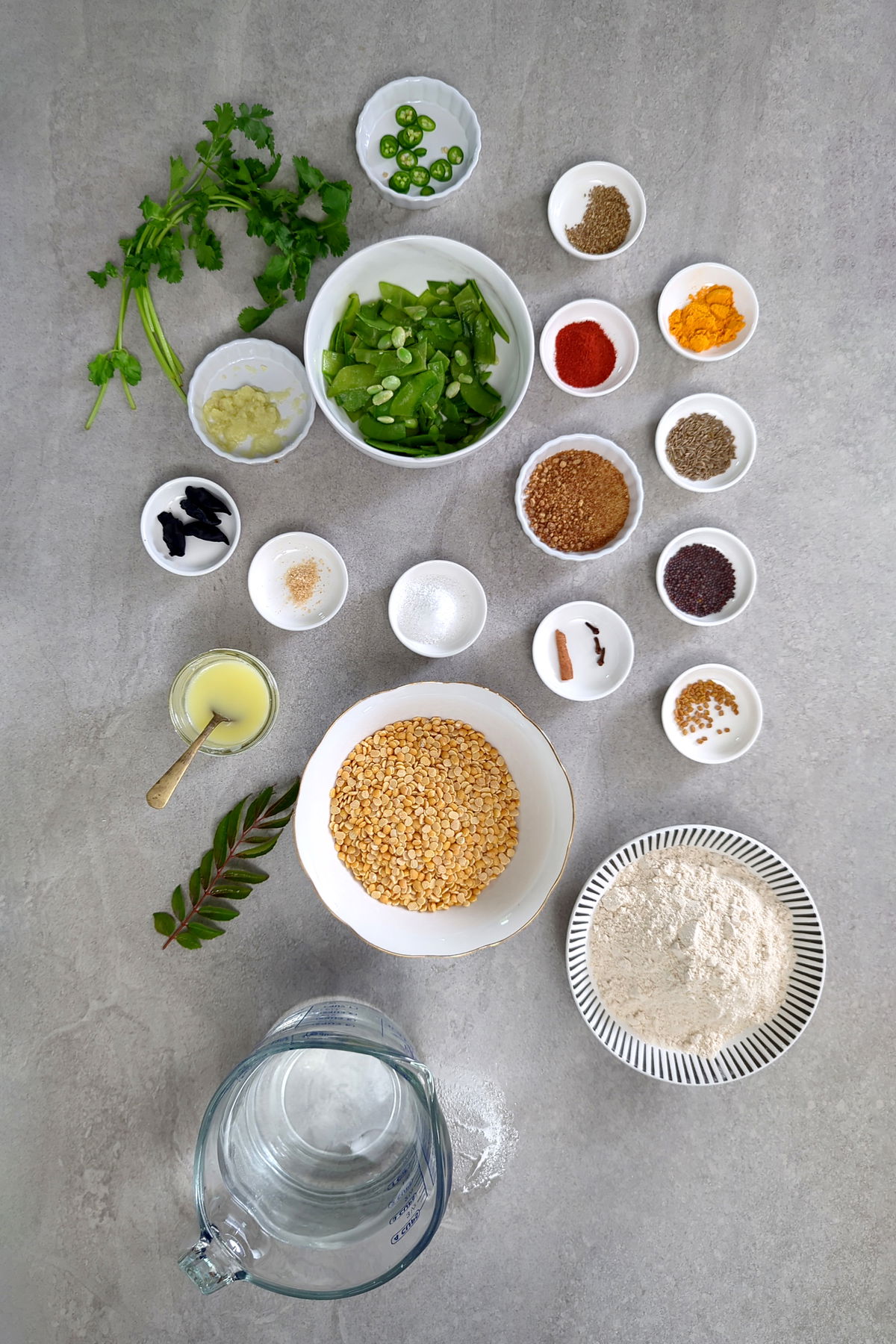
Tuvar Dal (split pigeon pea) – tuvar is the dal of choice for many Gujarati dishes. It is a versatile yellow dal with a nice creamy texture.
Green Beans – My family uses papdi, another ingredient often associated with Gujaratis. Often we use fresh tuvar beans (pigeon peas) in its place. I find that edamame works well in this recipe as well. Some people are more familiar with using peanuts here.
Spices – Turmeric, Chili Powder, Methi Dana, Cinnamon, Cloves, Cumin, Mustard Seeds, Curry Leaves – these are spices that are very common in Gujarati cooking. For the Gujarati cook, adding these is as simple as lifting a masala dabba and grabbing a spoonful from each spice bowl inside. You can skip the ones that you don’t have, but it will affect the complexity of the final dish.
Kokum – Kokum is a dried fruit from the Western Ghats in India. It is commonly used in Gujarati dishes as a souring agent. You can replace the kokum with tamarind paste, amchoor, or by squeezing some lemon over the dal after it finishes cooking.
Dumplings – Whole Wheat Flour, Ajwain (carom seeds), Ghee or oil, Turmeric, Chili Powder, Salt
Cooking Tips
- It is an absolute must that the dal is at a rolling boil before adding dhokli, otherwise, the dhokli will stick together and form a mush.
- Roll out dhokli thin to avoid thick dumplings, otherwise you may end up with something closer to the Rajasthani style, and you will have to adjust your cook time.
- After adding the dumplings, be sure to stir the dumplings once to make sure they are not sticking to the bottom which would cause them to burn. Then continue to stir every few minutes.
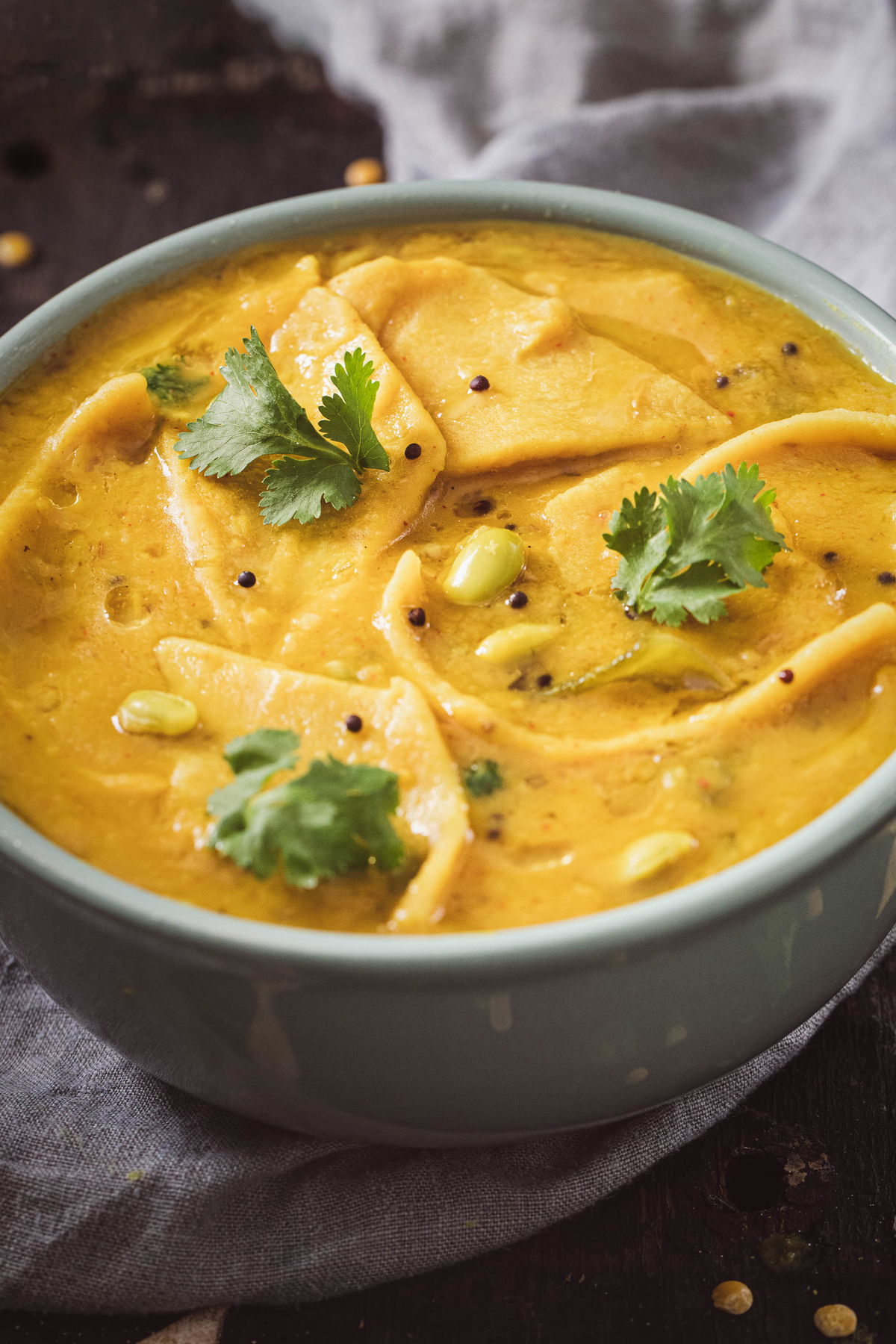
Variations
- Use your green of choice: papdi, guvar, edamame, kale, spinach, or use 2 tablespoons of raw peanuts instead.
- Choose your souring agent. I use kokum, but you may use amchoor or tamarind. If you want to use lemon juice, hold off adding it until the dish is fully cooked.
- My recipe uses a lot of different spices which are commonly found in a Gujarati masala dabba. If you don’t have them all, you can leave some out. Cloves, cinnamon, curry leaves, either mustard seeds or cumin seeds, and fenugreek seeds can be left out. It will change the overall flavor of the dish, but the tradeoff for simplicity may be worth it and it will still taste good. However, be sure to pay careful attention to the balance of acid, sugar, and spice.
Serving
Dal dhokli should be served hot. I like to serve it with a squeeze of lime or lemon juice and a drizzle of ghee.
Reheating
Dal Dhokli can be stored in the refrigerator for up to 2 days. Reheat it in the microwave or stovetop, and add a splash of water since the dhokli will thicken the dal as it sits in the refrigerator.
I do not recommend freezing already prepared dal dhokli, the texture of the dhokli will not come out right.
You can however freeze the dal and the uncooked dhokli separately and combine them when you are ready to cook. Roll out the dhokli and cut it into diamonds. Place the diamonds onto a baking sheet in a single layer and freeze for two hours. Then the frozen dhokli can be placed in a container and frozen for up to three months.
When ready to cook, bring the dal to a boil and add the frozen dhokli to the dal one by one. The dhokli can be cooked straight from frozen with no need to defrost as long as the dal is at a rolling boil. Give the dholki three extra minutes to cook from frozen.
Authentic Gujarati Dal Dhokli
This Instant Pot version of Gujarati Dal Dhokli is a savory one-pot comfort food. It features wheat flour dumplings (dhokli) simmered in a sweet and tangy lentil soup (dal) seasoned with spices.
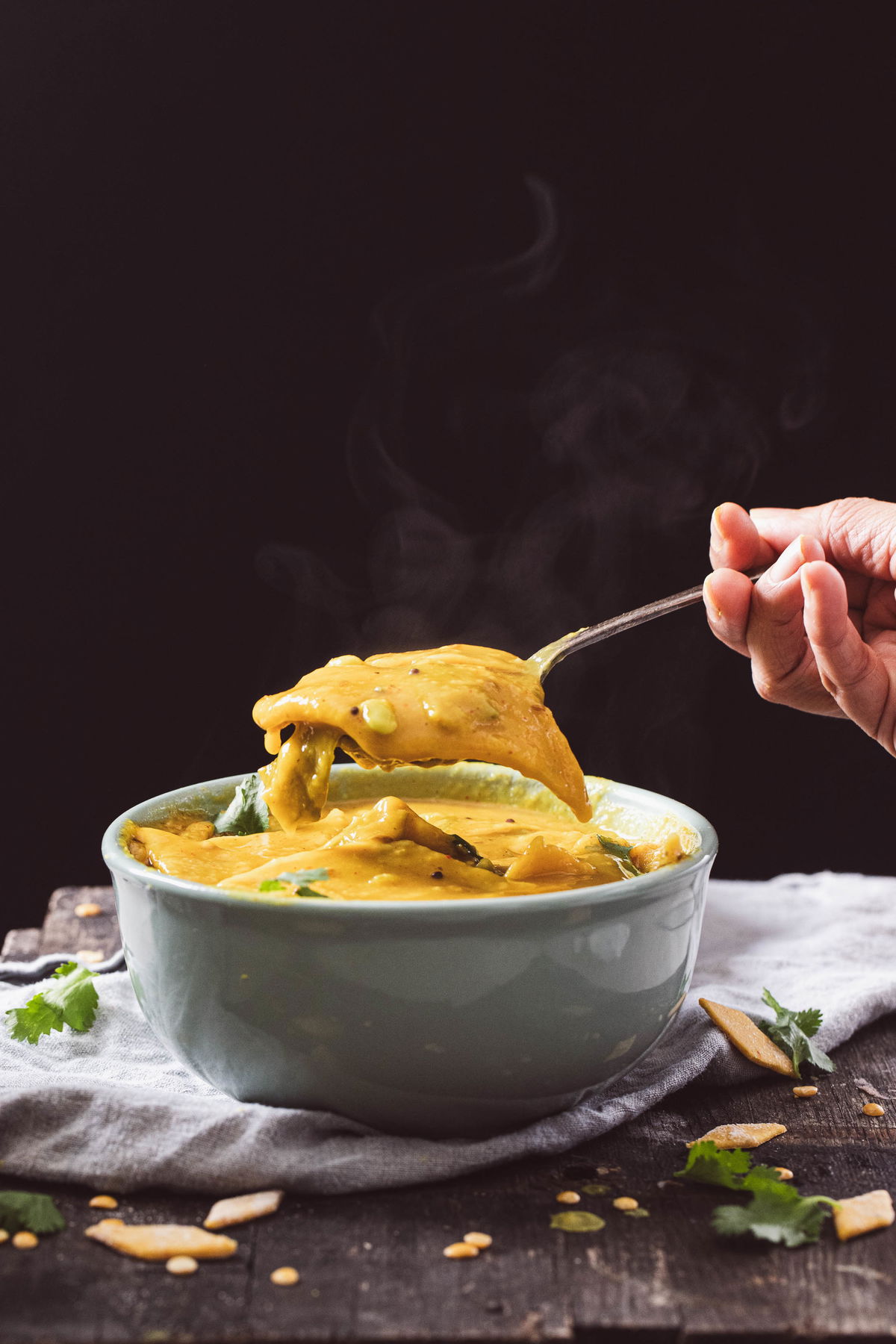
Ingredients
For the Dal
- 1 cup tuvar dal (split pigeon pea)
- 6 cups water
- 1/2 tsp ghee
- 1 tsp ginger paste
- 1 cup beans (such as tuvar, papdi, peas, or edamame)
- Salt
- 1/2 tsp turmeric powder
- 1/2 tsp red chili powder
- 1 green chili (sliced (or to taste))
- 2 tsp jaggery or brown sugar
- 4 pieces kokum (or 1 Tbsp lemon juice)
- A few sprigs of cilantro
For Dhokli
- 1 cup whole wheat flour
- 1/2 tsp turmeric powder
- 1/4 tsp red chili powder
- 1/2 tsp salt
- 2 tsp oil or ghee
- 1/2 tsp ajmo (carom seeds)
For Vaghar
- 2 Tbsp ghee
- 1/2 tsp mustard seeds
- 1/2 tsp cumin seeds
- 1/8 tsp hing
- 10 curry leaves
- 3 cloves
- 1/4 tsp fenugreek seeds (methi dana)
- 1 inch piece of cinnamon
Instructions
To Make the Dal
- Rinse the dry dal 2-3 times in cold water. No need to soak.
- Add 1 cup of dal, 3 cups water, and 1/2 tsp of ghee to the Instant Pot. Cook on high pressure for 9 minutes, followed by a Quick Release.
Dhokli
- While the dal is cooking, make your dhokli. Start by combining 1 cup whole wheat flour, 1/2 tsp turmeric powder, 1/4 tsp chili powder, 1/2 tsp ajmo (carom seeds), and 1/2 tsp salt in a large bowl. Whisk or mix this with your hand so the spices are evenly distributed.
- Add water, a little at a time while kneading to form a medium stiff dough.
- Roll the dough into a ball and divide into 4 separate balls of approximately the same size.
- On a smooth surface dusted with flour, roll out a ball of dough to form your flatbread. Roll it thin, to less than 1/8 inch thick.
- Use a knife to cut parallel lines down the flattened dough, about 1 1/2 to 2 inches apart. Then cut parallel lines perpendicular to these to form diamonds. Place these aside in a single layer and repeat for each of the remaining 3 balls of dough.
For the Dal Dhokli
- When the dal is finished cooking, set the Instant Pot saute mode. Add 2 tsp jaggery, 4 kokum, 1/2 tsp turmeric, 1/4 tsp chili powder, 1 tsp ginger paste (or grated ginger), salt, 1 cup beans and 3 cups of water. Bring to a boil.
- While the dal is cooking, prepare the vaghar (tempering). In a separate small pan, heat 2 tablespoons of ghee. When the ghee shimmers, add ½ tsp mustard seeds, let them start to pop, then add 1/2 tsp cumin seeds and let them sizzle. Add 1/8 tsp hing, 1/4 tsp fenugreek seeds, 10-12 curry leaves, 2 cloves, and a 1” piece of cinnamon. Remove from heat and pour the ghee into the dal. Cook the dal for 20 minutes.
- Bring the dal to a rolling boil (if it isn't there already). Reset the saute timer to ensure the Instant Pot does not turn off. Add the diamonds of dhokli, one piece at a time, to the boiling dal. Stir each time after adding a few pieces to ensure the dhokli are coated and able to stay separated from each other.
- Cover and cook the dal dhokli for 10-12 minutes. Adjust consistency by adding water, if needed. Serve hot with cilantro and, optionally, a drizzle of lemon juice and ghee.
Notes:
if using lemon juice, add it at the end
If using frozen peas or a quicker cooking bean, adjust when the beans are added to the dal. Frozen peas can be added with the Dhokli.
